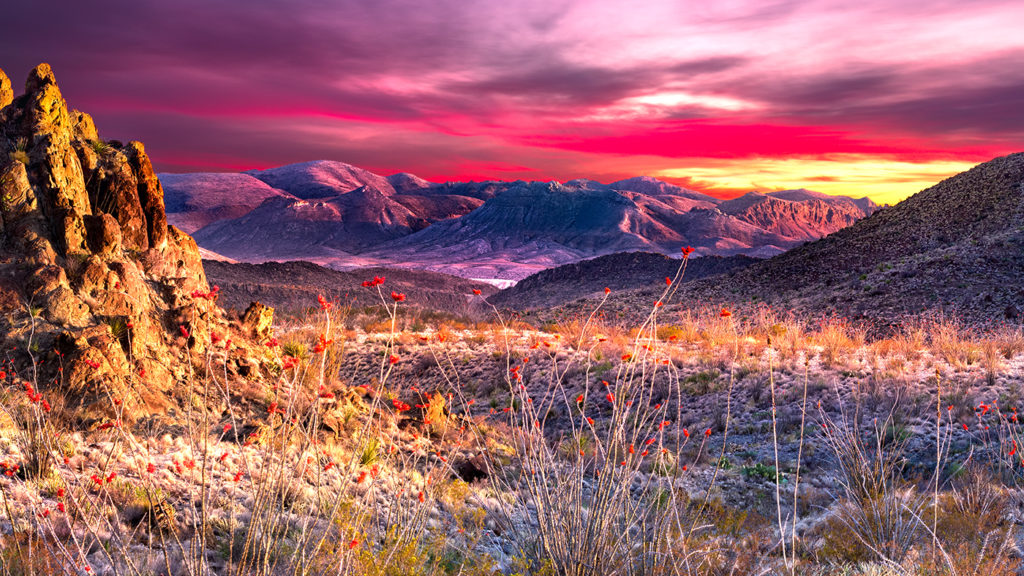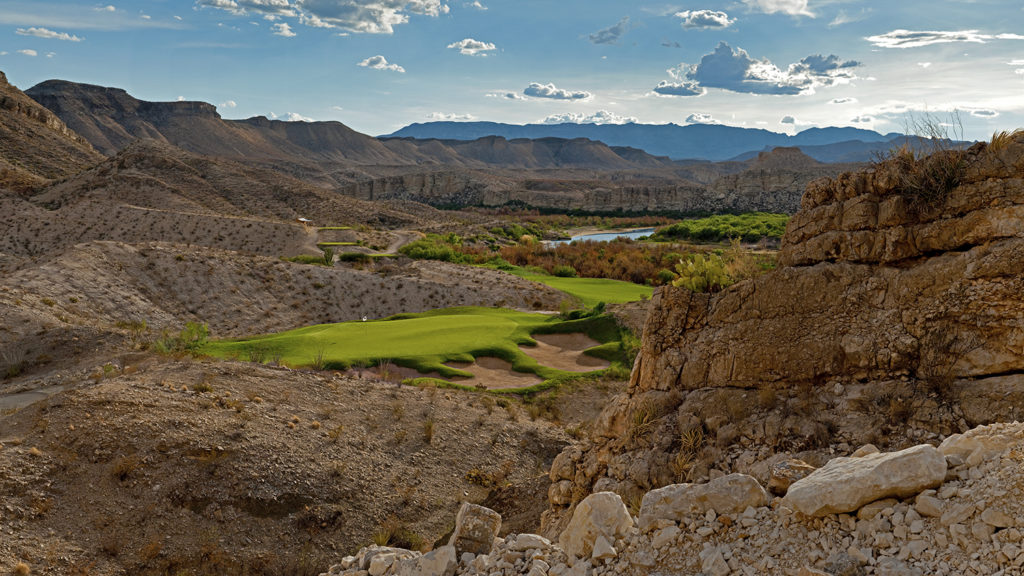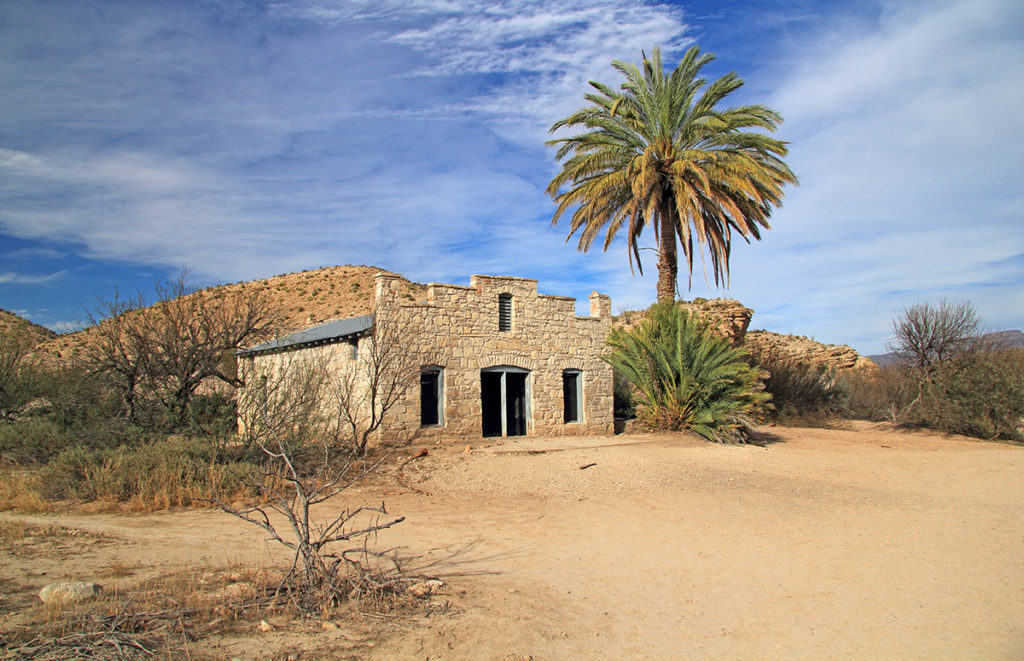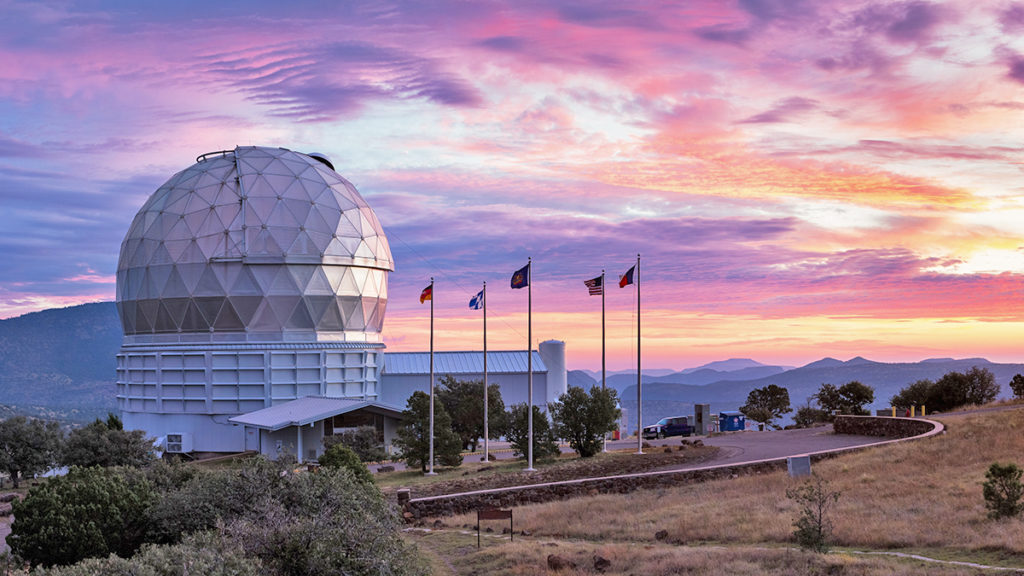 When we go on vacation or mini-getaways, we typically plan with a specific destination in mind. Very rare is it that we have or make the time to visit hot spots along the way. When you visit Big Bend, you’ll have to throw out that archaic attitude and plan to maximize your time. From the Alpine region to McDonald’s observatory and the ever-mysterious Marfa lights, Big Bend is packed with plenty to do and see. Earning its name, the Big Bend is big on entertainment, dining, playing and staying.
When we go on vacation or mini-getaways, we typically plan with a specific destination in mind. Very rare is it that we have or make the time to visit hot spots along the way. When you visit Big Bend, you’ll have to throw out that archaic attitude and plan to maximize your time. From the Alpine region to McDonald’s observatory and the ever-mysterious Marfa lights, Big Bend is packed with plenty to do and see. Earning its name, the Big Bend is big on entertainment, dining, playing and staying.

Hole #13, 167 yd. Par 3 at Black Jack’s Crossing, Lajitas Golf Resort and Spa, Lajitas, TX.
Lajitas’s Golf Resort is the place to stay. With a 27,000-acre resort along the Rio Grande, Black Jack’s Crossing was designed by golf superstar Lanny Wadkins, winner of the 1977 PGA Championship, eight-time member of the US Ryder Cup team (as well as 1995 team captain), and inductee into the World Golf Hall of Fame. Texas Outside ranked Black Jack’s Crossing the “Number One Resort Course in Texas”. Golfweek magazine named Black Jack’s the “Best New Course in Texas.” And since opening in 2012, the course also has been named the number-one “Best Golf Course You Can Play in Texas” by the Dallas Morning News, number-one “Most Beautiful Course in Texas” by Golf Magazine and the number-four “Best Course You Can Play in Texas” also by Golfweek.
After a round of early golf, you’ll want to head out and take on the Big Bend. There is a lot of ground to cover and you don’t want to miss anything, so reserve a bird’s eye view of Big Bend with Rio Aviation tours. The unobstructed view of geology you will receive from above is incredible. Licensed to conduct tours over both the Big Bend National Park and Ranch State Park, flights can also be customized to fit your landmark wishes.
There are also five river canyons in Big Bend that offer opportunities to kayak, canoe or raft the Rio Grande. Unlike many rivers in our region, these are not difficult for beginning and intermediate paddlers at normal river flows. Guided tours are available that last anywhere from two hours to 10 days.
 If you want to visit a small village in Mexico, you can do that here too. Boquillas is a small Mexican village that sits on the Eastern side of Big Bend National Park. There is an international port of entry to cross the Rio Grande. There is a row boat with a trained oarsman that is used for crossing. When the river is low, some people choose to wade across at their own risk. The landing is about a mile from the village and a local guide will accompany you into town by horse for gratuity.
If you want to visit a small village in Mexico, you can do that here too. Boquillas is a small Mexican village that sits on the Eastern side of Big Bend National Park. There is an international port of entry to cross the Rio Grande. There is a row boat with a trained oarsman that is used for crossing. When the river is low, some people choose to wade across at their own risk. The landing is about a mile from the village and a local guide will accompany you into town by horse for gratuity.
Once there, most people take a walk-through town, where local handicrafts such as wire sculptures of scorpions, road runners, and lizards can be found. Embroidered textiles and quilts are also available at very reasonable prices. There are two local restaurants, Jose Falcon’s and Boquillas where you can dine overlooking the Rio Grande. Both restaurants offer fresh, simple but good food. Just remember to carry your passport and be back at the port before 6 p.m. to crossover.
Big Bend National Park is the highlight of the trip. This 800,000-acre national park contains three basic habitats: river, desert and mountains. It encompasses the largest protected area of the Chihuahua Desert in the U.S.
Among the many options at the park, Mariscal is the most remote of the Park River Canyons. The only way to see it is by river. Reaching the put-in point at Talley requires over 30 miles of driving on rough dirt road, which is why it’s important to check the weather before entering this desert backcountry. Difficult? It is indeed, but it is worth the effort and the wait once you’ve arrived.
Just west of Big Bend National Park, the Big Bend Ranch State Park offers an entirely different experience. The rugged volcanic landscapes cover 275,000 acres of managed wilderness.
Named for the vast curve of the Rio Grande, Big Bend has over one million acres of public land within these two parks and beyond that offer hiking, camping, river running, horseback riding, mountain biking, birding, jeep touring, and a plethora of sightseeing opportunities on paved and improved roads also.
 When you start to see the dusk, how about seeing the stars? Take a trip to the McDonald Observatory, a research unit of The University of Austin, where you’ll find one of the world’s leading astronomical research centers. Located atop Mount Locke and Mount Fowlkes in the Davis Mountains the observatory is a partner in the forthcoming Giant Magellan Telescope, under construction in Chile. McDonald Observatory’s administrative offices are on the UT Austin campus. The Observatory works with the University’s Department of Astronomy on both research and teaching. McDonald’s principal research telescopes include among others, The Giant Magellan Telescope (GMT). Now under construction in Chile, the GMT is the first in a new generation of extremely large telescopes. Its seven mirrors will span 25 meters. UT Austin is a founding partner in the collaboration which includes several other U.S. universities and partner institutions from around the world. This telescope is expected to see first light in 2021 and be fully operational by 2024.
When you start to see the dusk, how about seeing the stars? Take a trip to the McDonald Observatory, a research unit of The University of Austin, where you’ll find one of the world’s leading astronomical research centers. Located atop Mount Locke and Mount Fowlkes in the Davis Mountains the observatory is a partner in the forthcoming Giant Magellan Telescope, under construction in Chile. McDonald Observatory’s administrative offices are on the UT Austin campus. The Observatory works with the University’s Department of Astronomy on both research and teaching. McDonald’s principal research telescopes include among others, The Giant Magellan Telescope (GMT). Now under construction in Chile, the GMT is the first in a new generation of extremely large telescopes. Its seven mirrors will span 25 meters. UT Austin is a founding partner in the collaboration which includes several other U.S. universities and partner institutions from around the world. This telescope is expected to see first light in 2021 and be fully operational by 2024.
One of the world’s largest optical telescopes, the Hobby-Eberly Telescope (HET) was completed in 1997. The HET is optimized for spectroscopy, the decoding of light from stars and galaxies to study their properties. This makes it ideal for searching for planets around other stars, as well as probing distant galaxies, exploding stars, black holes, and more. Soon, the telescope will begin a major study of dark energy, the Hobby-Eberly Telescope Dark Energy Experiment (HETDEX). The HET is a joint project of The University of Texas at Austin, The Pennsylvania State University, Ludwig-Maximillian’s-Universität München, and Georg-August-Universität Göttingen.
McDonald Observatory also operates a multi-faceted international public outreach program. At the on-site Frank N. Bash Visitors Center, outreach events include star parties, public tours, K-12 teacher and student activities, and more. McDonald also produces the StarDate radio program, StarDate magazine, the StarDate Online website, and special programs for hundreds of elementary and secondary teachers across the United States.
Interested in the unknown and the ever-mystical? The Marfa light phenomenon is within reach. Marfa lights, also known as the Marfa ghost lights, have been observed near U.S. Route 67 on Mitchell Flat east of Marfa, Texas. Onlookers have related them to paranormal phenomena such as ghosts and UFO’s.
Although scientific research suggests that most, if not all these mysterious lights are atmospheric reflections of automobile headlights and campfires.
There is a viewing station set up off Highway 67 outside of Marfa, from which the lights may be observed. Their appearance is said to be sporadic, but if your inner skeptic (or in my case, my inner-child) wants to know for sure, take a ride and see if you see these multicolored, basketball-sized, glowing orbs floating in the distance.
By Michelle Keller